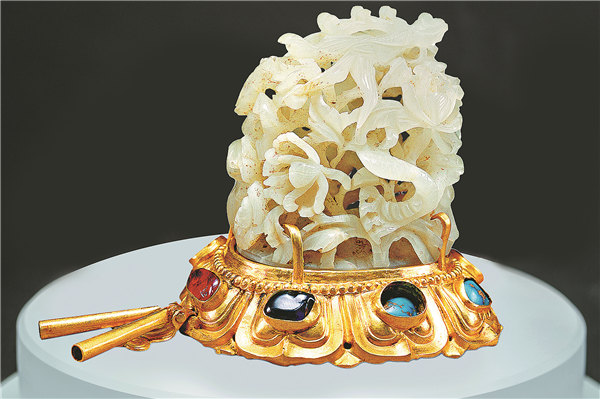

Hotan jade, named after its place of origin in today's Xinjiang Uygur autonomous region, soon became China's most treasured jade material, sought after by all who had inhabited the land.
In 1271, the Mongols founded China's Yuan Dynasty (1271-1368), and it didn't take long for the Mongol elite of Yuan to incorporate jade into their dress code, wearing hats topped with round jade carvings.
Measuring no more than 5 centimeters in height, these carvings were conveniently dubbed "jade hat finials".
"These jade hat finials provide powerful examples of how a constantly evolving jade culture was adopted by a people eager to prove themselves legitimate rulers of China. They were statement jewelry in the true sense of the words," says Zuo Jun, an expert in ancient Chinese jade from the prestigious Nanjing Museum in eastern China.
According to him, precious stones such as sapphires were sometimes used in place of jade as hat finials, but were never held in the same high esteem.
The jade hat finials lost their prominence following the fall of the Yuan Dynasty in 1368, but they were not entirely forgotten. During the succeeding Ming Dynasty (1368-1644), they continued to be appreciated as elaborate works of art, reimagined as furnace tops that rested atop wooden lids covering jade furnaces. Inside these furnaces, incense — likely imported via the Silk Road — once smoldered, sending plumes of fragrant smoke through the holes of the openwork furnace top.